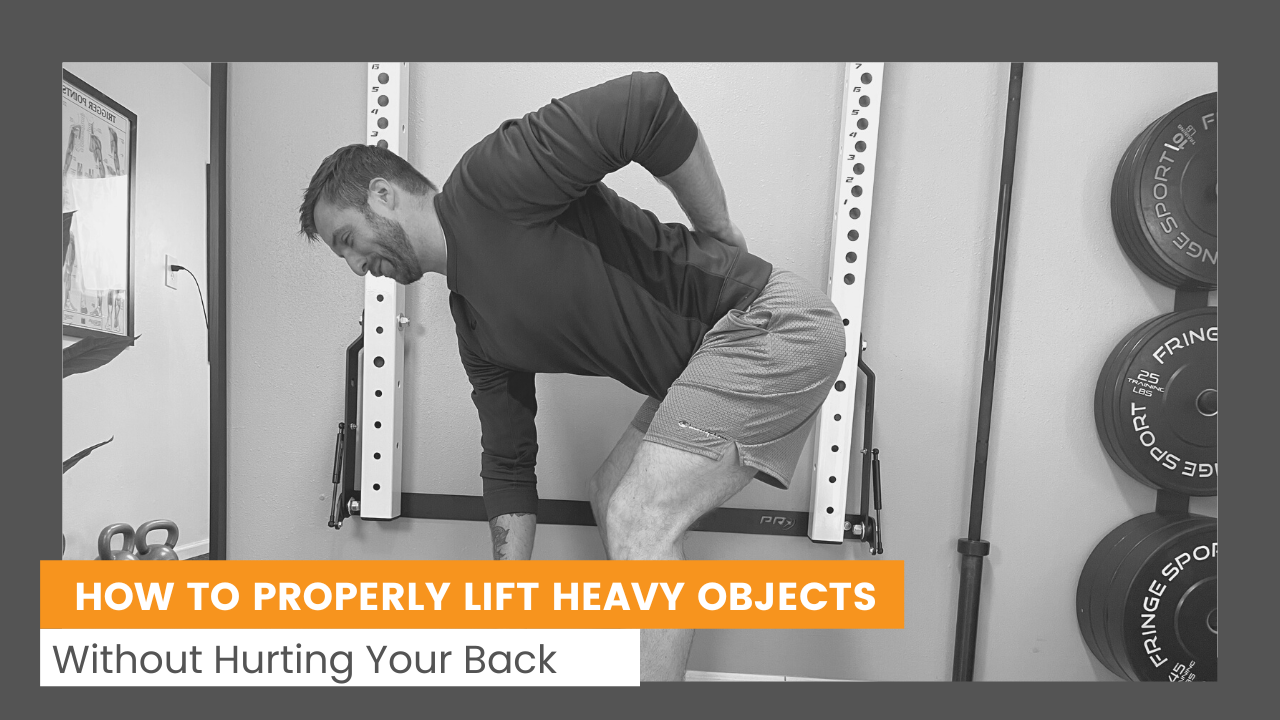How To Properly Lift Heavy Objects Without Hurting Your Back
One of the most common ways adults injure their back is by lifting a heavy object. This leads to billions of dollar spent in treatment and lost days of work. But most most importantly it keeps you from enjoying all your favorite activities. Many of these injuries could be avoided by improving how we move to limit impact on the spine. These seven tips will help you how to properly lift heavy objects without injurying your lower back.
Tip #1: Position Yourself Close To Weight
First things first, posititioning the weight as close to your body as possible will decrease the likelihood of injuring your lower back. Reaching for the object causes your lower back to round and shifts your center of gravity forward, placing more impact on the structures of your spine.
Tip #2 Keep Your Hips Down, Chest Up
Neutral spine is a term used to describe when you spine is in proper alignment. Keeping your hips down and chest up improves spinal positioning to decrease the likilihood of injuring your lower back. Trying to lift with your hips elevated will force you to lift with your back (vs. your legs).
Tip #3: Develop Tension In Hamstrings Before Lifting
You've probably heard the phrase, 'lift with your legs, not your back'. One way to do that is to develop tension in your hamstrings. Before lifting, raise your hips slightly until you feel tension in your hamstring muscles. This ensures that your big, strong muscles are doing the lifting rather than the joints and discs in the lower back.
Tip #4: Brace Your Abs Before Lifting
Another common way people injure the backs while lifting is by allowing too much spinal movement. Being able to control your spinal movement is important to understand in learning how to lift properly. A simple abdominal brace will 'lock' your spine in place to avoid rounding of the lower back.
Tip #5: Press Through Feet
To initiate the lift it's better to press your feet into the ground to stand up. This will keep you from overextending at the lower back. A common mistake people make when lifting is bringing the hips up and then extending at the back to get the object up (watch video below). This increases the risk for injuring when lifting heavy objects.
Tip #6: Avoid Twisting While Lifting
Lifting and twisting is one of the most common ways people injure their low back. It's harder to brace your core when twisting which puts your spine in a vulnerable position. When lifting something heavy, get into a standing position and then turn with your feet to avoid twisting at your spine.
Tip #7: If It's Too Heavy Or Awkward - Get Help!
If you're concerned about injuring your back while lifting the best practice is to ask for help. Especially when objects are heavy or awkward shapes. An acute lower back injury can keep you out for months. If you're unsure if you can do lift it alone, it's better to be safe than sorry.
Learning how to properly lift heavy objects safely can save you from weeks (to months) of pain. Focusing on proper form will limit impact on your lower back. Developing tension in your muscles will take pressure off your joints. Combined these tips will decrease the risk of a lower back injury when lifting a heavy object.
For the last 10 years I’ve been helping adults learn to move with confidence to solve chronic joint pain and maintain their lifestyle as they get older. I’ve put together a free, step-by-step program to help you get started treating your joint pain from home. Download your free copy of ‘Solving Pain With Strength’ at the link below.




